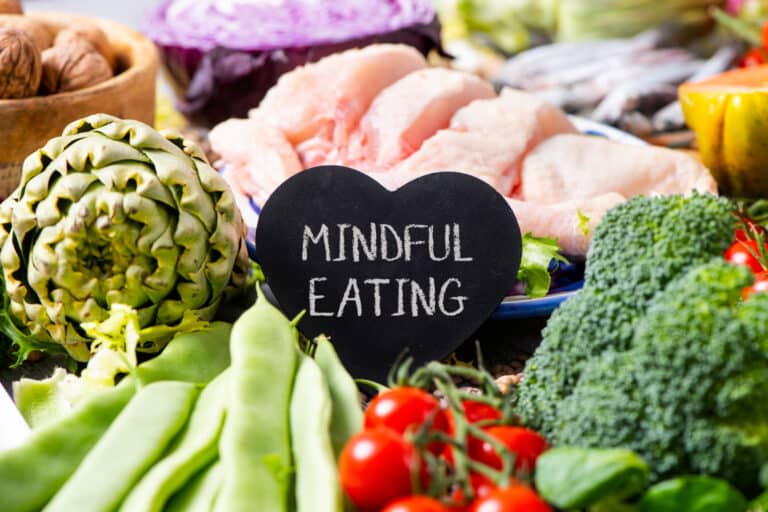Mindful Eating
In today’s world of food options and dietary preferences, being mindful of what we consume is essential. For individuals with specific dietary needs or health goals, avoiding certain ingredients like gluten, dairy, and added sugars is a priority. However, these components often have a way of sneaking into our meals and beauty products without us even realizing it. In this blog post, we’ll uncover the common ways that gluten, dairy, and sugar hide in foods, shedding light on the importance of reading labels and making informed choices.
Gluten: The Silent Culprit
Gluten, a protein found in wheat, barley, and rye, can be a challenge to detect in various foods. It’s not just limited to bread and pasta; gluten can be present in unexpected places, which makes it crucial to be vigilant. Here are some ways gluten hides in foods:
Processed Foods:
Many processed foods, such as sauces, soups, and deli meats, use gluten-containing thickeners or fillers to enhance texture or flavor. Always check ingredient labels to spot any hidden gluten sources.Sauces and Marinades:
Soy sauce, for example, often contains wheat as a key ingredient. Look for gluten-free alternatives or tamari sauce, which is a gluten-free version of soy sauce.Imitation Meats:
Meat substitutes, like veggie burgers or sausages, might contain gluten-containing binders to hold the product together. Look for certified gluten-free options if you’re avoiding gluten.Flavor Enhancers:
Certain seasonings and spice blends may contain gluten as an anti-caking agent. Choose single-ingredient spices or check labels for gluten-free certification.Beauty Products:
A common and frequently used ingredient is “hydrolyzed wheat protein”. Also, look for Vitamin E derived from wheat germ. Here is a link to more ingredients that may be problematic: https://www.beyondceliac.org/q-and-a/hidden-gluten-in-dental-and-cosmetic-products/.Cross-Contamination:
Foods labeled as gluten-free might still be exposed to gluten during production, particularly if they are manufactured in facilities that process gluten-containing products. Cross-contamination is a real concern, especially for those with severe gluten sensitivity or celiac disease.
Dairy: The Disguised Intruder
Dairy products, including milk, cheese, and yogurt, contain lactose, a sugar naturally found in milk. Many individuals are unable to digest this sugar and suffer from GI issues if they eat it. Casein can be another problem. This is a protein that’s found in dairy products and intolerance is not uncommon. For those who are lactose intolerant or have dairy sensitivity, it’s crucial to recognize the various forms dairy can take.
Hidden Milk Ingredients:
Beyond obvious dairy products, many foods might contain hidden milk ingredients, such as whey, casein, or milk solids. These can be found in baked goods, processed meats, and even some non-dairy creamers.Processed Foods:
Just like with gluten, processed foods often contain dairy-based additives for flavor, texture, or shelf life. Read labels carefully to spot these hidden sources. Rennet, recaldent, whey, and whey protein are all dairy derivatives.Cross-Contamination:
Some dairy-free products, like non-dairy milks or yogurts, could be produced on equipment shared with dairy products. Look for products labeled as “dairy-free” or “vegan” to ensure no cross-contamination.Hidden Cheese:
Dishes at restaurants or in packaged foods might be topped with grated cheese, which isn’t always immediately obvious. Always ask about ingredients or look for dairy-free alternatives.Choose products that have A2 Casein:
This protein causes fewer problems with intolerance. There is a brand of dairy products called A2 that uses only this form of the protein.
Sugar: The Sweet Saboteur
Sugar hides in plain sight more often than we realize. It’s not just the granulated white sugar we need to watch out for; added sugars can be lurking even in seemingly healthy options. Fortunately, these added sugars are now listed on food labels.
Flavored Yogurts:
Yogurts marketed as “healthy” can contain massive amounts of added sugars to enhance taste. Choose plain yogurt and add your own fresh fruits for natural sweetness.Condiments and Sauces:
Ketchup, barbecue sauce, and salad dressings (especially fat-free ones) often contain hidden sugars. Look for options with no added sugars or make your own at home.Granola and Cereal:
Breakfast cereals and granola bars can be loaded with added sugars. Always check labels and choose products with lower sugar content. Or better yet, make your own no sugar-added granola!Beverages:
Fruit juices, energy drinks, and flavored coffee creamers are notorious for their high sugar content. Choose water, herbal tea, or unsweetened beverages to avoid hidden sugars.Processed Snacks:
Packaged snacks like chips, crackers, and even some trail mixes might have added sugars. Whole foods like nuts, fruits, and vegetables make for healthier snacking.
And as a rule of thumb, if the food label contains an ingredient ending in “-ose”, chances are, it’s a sugar.
Bottom Line
Staying mindful of what we eat involves more than just considering the obvious ingredients. Gluten, dairy, and sugar can all find their way into a variety of foods and products, often under the radar. Reading ingredient labels, asking questions about food preparation, and choosing whole, unprocessed options are key strategies for avoiding these hidden ingredients. By being proactive and informed, we can make better dietary choices that give the body the support it needs.
Dr. Anna Garrett is a menopause expert and Doctor of Pharmacy. She helps women who are struggling with symptoms of perimenopause and menopause find natural hormone-balancing solutions so they can rock their mojo through midlife and beyond. Dr. Anna is the author of Perimenopause: The Savvy Sister’s Guide to Hormone Harmony. Order your copy at www.perimenopausebook.com.
Dr. Anna is available for 1-1 consultation. Find out more at www.drannagarrett.com/lets-talk.




